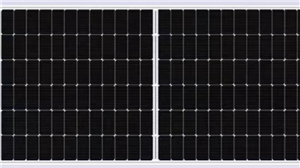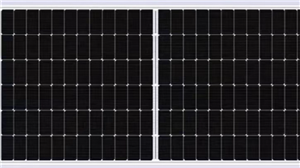Energy storage power station
#What is an energy storage power station?
Energy storage power station is a systematic facility that can achieve energy storage, conversion, and release. Its core function is to solve the problem of mismatch between "generation" and "consumption" in time, space, or power in the power system, thereby improving the stability, economy, and sustainability of the power system. It is like the "power bank" of the power system, storing electricity when there is abundant power and releasing electricity when there is a shortage or peak demand. It is a key hub connecting various power sources, power grids, and users in the modern energy system.
##1、 The core components of an energy storage power station
Energy storage power stations are not a single device, but a complex project that involves multiple subsystems working together, mainly including the following core components:
-The energy storage system is responsible for storing electrical energy and serves as the "energy container" of the power station. Common energy storage technologies include lithium-ion battery energy storage, lead-acid battery energy storage, pumped storage, flywheel energy storage, compressed air energy storage, flow battery energy storage, etc. The energy storage principles, capacities, and lifetimes of different technologies vary greatly.
-Power Conversion System (PCS): It realizes the AC-DC conversion of electrical energy and serves as the "bridge" between energy storage systems and the power grid. Convert AC power from the power grid to DC power during charging and store it. Convert DC power to AC power during discharging and deliver it to the power grid.
-Control system: responsible for the operation scheduling and monitoring of the power station, equivalent to the "brain". By monitoring real-time data such as grid load and power output, the charging and discharging strategies of the energy storage system are automatically controlled to ensure efficient and safe operation of the power station.
-* * Auxiliary system * *: including cooling system (maintaining stable temperature of energy storage equipment), fire protection system (preventing safety risks of batteries and other equipment), energy storage battery management system (BMS, monitoring battery status), etc.
##2、 The main functions of energy storage power stations
1. * * Stabilize power fluctuations**
For new energy generation such as wind power and photovoltaics, their output is greatly affected by weather (such as wind power being strong at night and weak during the day, and photovoltaics being strong during the day and absent at night), with significant fluctuations and intermittency. Energy storage power stations can store electrical energy when there is an excess of new energy output and release it when output is insufficient, reducing the impact on the power grid.
2. Peak shaving and valley filling**
The electricity demand of the power system has a difference between "peak" and "valley" (such as the concentration of industrial and residential electricity during the day as the peak, and the reduction of electricity consumption at night as the valley). Energy storage stations charge during low peak periods (low electricity prices) and discharge during high peak periods (high electricity prices), which not only reduces users' electricity costs but also alleviates the pressure of peak power supply in the power grid.
3. * * Provide backup power supply**
In the event of a sudden power outage in the power grid, energy storage stations can respond quickly (in milliseconds or seconds) and serve as emergency power sources to supply power to important loads such as hospitals and data centers, ensuring continuous power supply.
4. * * Improve the stability of the power grid**
By quickly adjusting the voltage and frequency of the power grid through charging and discharging, the stable operation parameters of the power grid are maintained, especially suitable for remote areas or weak power grid scenarios.
3、 The significance of the development of energy storage power stations
Under the promotion of the "dual carbon" goals (peak carbon emissions and carbon neutrality), the global energy structure is accelerating its transition to new energy, and energy storage power stations have become a key supporting technology for solving the consumption of new energy and upgrading the power grid. It can not only improve energy utilization efficiency and reduce power system costs, but also promote the transformation of the energy system from "fossil energy as the mainstay" to "new energy as the mainstay", helping to achieve green and low-carbon development.
With technological advancements (such as reduced battery costs and improved efficiency) and policy support, the application scenarios of energy storage power stations are expanding from the grid side and power source side to the user side (such as industrial and commercial parks and household energy storage), and will play a more central role in the new power system in the future.
Energy storage power station is a systematic facility that can achieve energy storage, conversion, and release. Its core function is to solve the problem of mismatch between "generation" and "consumption" in time, space, or power in the power system, thereby improving the stability, economy, and sustainability of the power system. It is like the "power bank" of the power system, storing electricity when there is abundant power and releasing electricity when there is a shortage or peak demand. It is a key hub connecting various power sources, power grids, and users in the modern energy system.
##1、 The core components of an energy storage power station
Energy storage power stations are not a single device, but a complex project that involves multiple subsystems working together, mainly including the following core components:
-The energy storage system is responsible for storing electrical energy and serves as the "energy container" of the power station. Common energy storage technologies include lithium-ion battery energy storage, lead-acid battery energy storage, pumped storage, flywheel energy storage, compressed air energy storage, flow battery energy storage, etc. The energy storage principles, capacities, and lifetimes of different technologies vary greatly.
-Power Conversion System (PCS): It realizes the AC-DC conversion of electrical energy and serves as the "bridge" between energy storage systems and the power grid. Convert AC power from the power grid to DC power during charging and store it. Convert DC power to AC power during discharging and deliver it to the power grid.
-Control system: responsible for the operation scheduling and monitoring of the power station, equivalent to the "brain". By monitoring real-time data such as grid load and power output, the charging and discharging strategies of the energy storage system are automatically controlled to ensure efficient and safe operation of the power station.
-* * Auxiliary system * *: including cooling system (maintaining stable temperature of energy storage equipment), fire protection system (preventing safety risks of batteries and other equipment), energy storage battery management system (BMS, monitoring battery status), etc.
##2、 The main functions of energy storage power stations
1. * * Stabilize power fluctuations**
For new energy generation such as wind power and photovoltaics, their output is greatly affected by weather (such as wind power being strong at night and weak during the day, and photovoltaics being strong during the day and absent at night), with significant fluctuations and intermittency. Energy storage power stations can store electrical energy when there is an excess of new energy output and release it when output is insufficient, reducing the impact on the power grid.
2. Peak shaving and valley filling**
The electricity demand of the power system has a difference between "peak" and "valley" (such as the concentration of industrial and residential electricity during the day as the peak, and the reduction of electricity consumption at night as the valley). Energy storage stations charge during low peak periods (low electricity prices) and discharge during high peak periods (high electricity prices), which not only reduces users' electricity costs but also alleviates the pressure of peak power supply in the power grid.
3. * * Provide backup power supply**
In the event of a sudden power outage in the power grid, energy storage stations can respond quickly (in milliseconds or seconds) and serve as emergency power sources to supply power to important loads such as hospitals and data centers, ensuring continuous power supply.
4. * * Improve the stability of the power grid**
By quickly adjusting the voltage and frequency of the power grid through charging and discharging, the stable operation parameters of the power grid are maintained, especially suitable for remote areas or weak power grid scenarios.
3、 The significance of the development of energy storage power stations
Under the promotion of the "dual carbon" goals (peak carbon emissions and carbon neutrality), the global energy structure is accelerating its transition to new energy, and energy storage power stations have become a key supporting technology for solving the consumption of new energy and upgrading the power grid. It can not only improve energy utilization efficiency and reduce power system costs, but also promote the transformation of the energy system from "fossil energy as the mainstay" to "new energy as the mainstay", helping to achieve green and low-carbon development.
With technological advancements (such as reduced battery costs and improved efficiency) and policy support, the application scenarios of energy storage power stations are expanding from the grid side and power source side to the user side (such as industrial and commercial parks and household energy storage), and will play a more central role in the new power system in the future.




